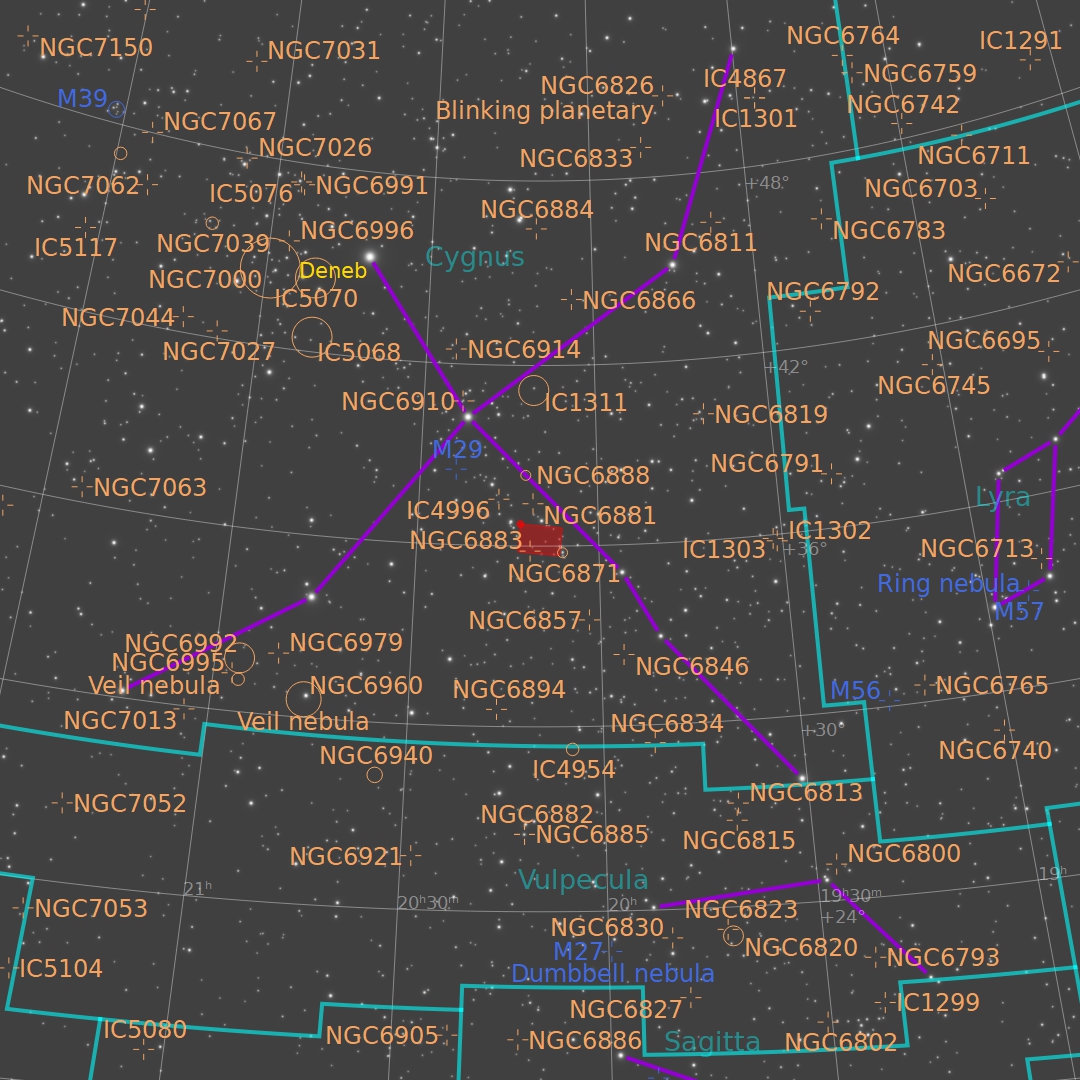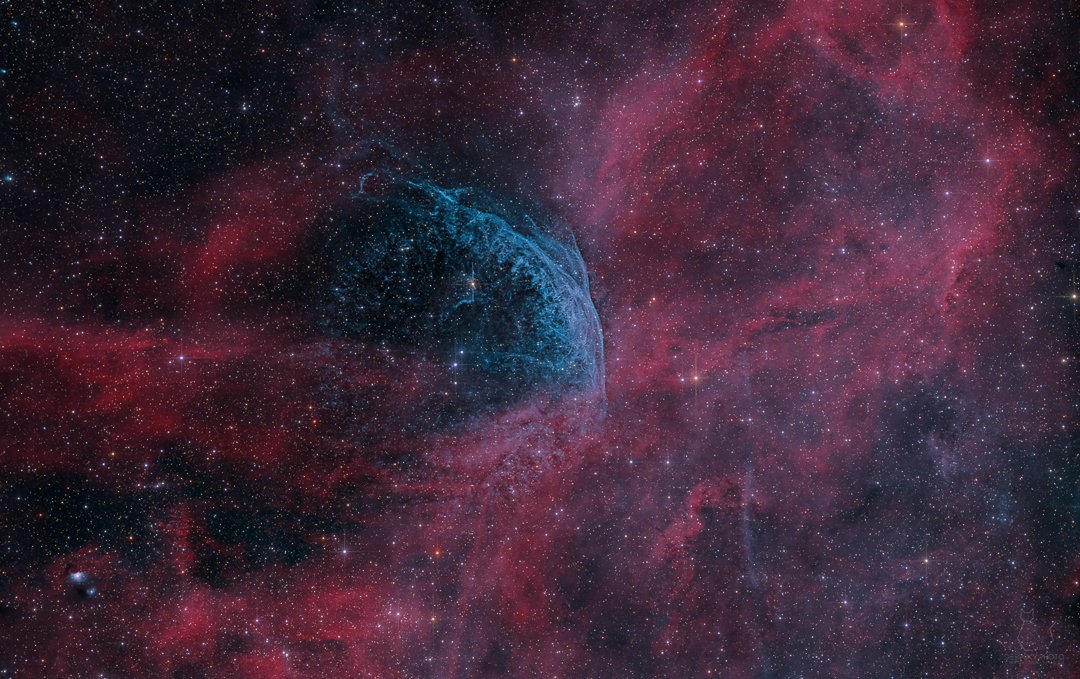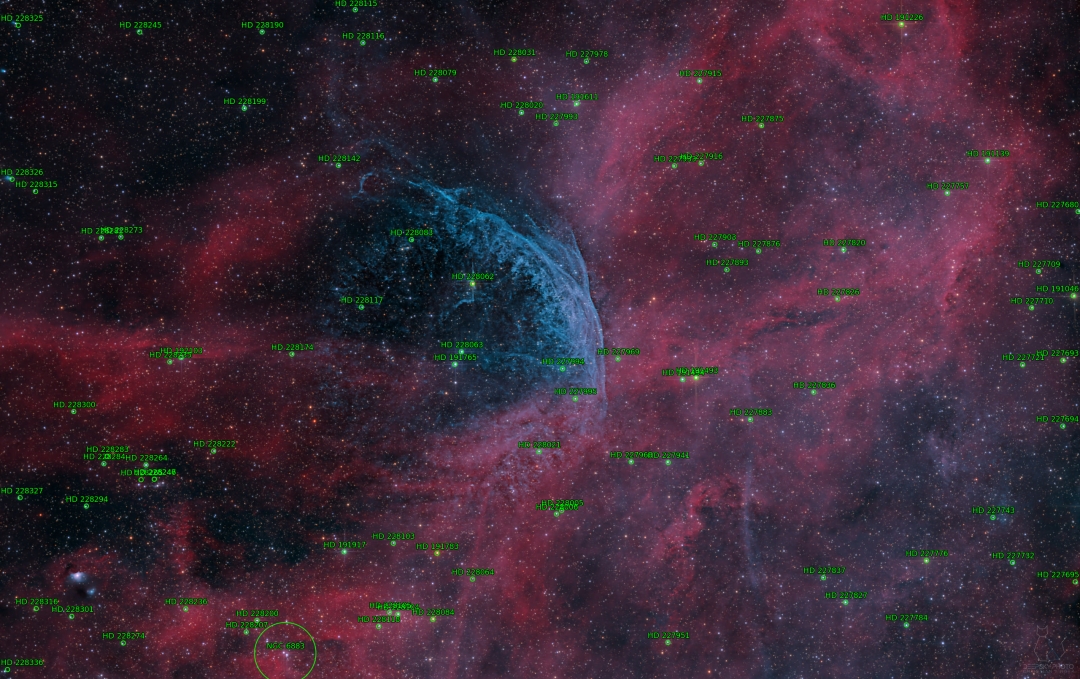Veränderlicher Wolf-Rayet-Stern im Sternbild "Cygnus"
Projekt #12
WR 134 ist ein veränderlicher Wolf-Rayet-Stern, der sich etwa 6.000 Lichtjahre von der Erde entfernt im Sternbild Cygnus befindet und von einem schwachen Blasennebel umgeben ist, der durch die intensive Strahlung und den schnellen Wind des Sterns erzeugt wird. Er hat den fünffachen Radius der Sonne, leuchtet aber aufgrund einer Temperatur von über 63.000K 400.000 Mal so hell wie die Sonne.
WR 134 war einer von drei Sternen im Sternbild Cygnus, die 1867 beobachtet wurden und ungewöhnliche Spektren aufwiesen, die aus intensiven Emissionslinien und nicht aus den üblichen Kontinuums- und Absorptionslinien bestanden. Sie waren die ersten Mitglieder der Sternklasse, die nach Charles Wolf und Georges Rayet, die ihr ungewöhnliches Aussehen entdeckten, als Wolf-Rayet-Sterne (WR-Sterne) bezeichnet wurden. Er gehört zur Stickstoffsequenz der WR-Sterne, während die beiden anderen (WR 135 und WR 137) beide zur Kohlenstoffsequenz gehören und auch OB-Begleiter haben. (Quelle: Wikipedia)
WR134 – Projektveröffentlichungen
Bild-Veröffentlichungen
Please find all project-related images for this revision below. There is also a Rev.2 available.
WR134 – Projektdetails
Nachfolgend sind alle projektbezogenen Details zu dieser Revision zu finden.
| Astrobin Link | WR134 (Rev.1) with OSC+Dual Narrowband (HO) |
| Astronomisches Objekt | WR134 / HD 191765 |
| Distanz zur Erde | 1.750pc (= 5.708 Lichtjahre) |
| Grösse / Durchmesser | 5,23R (Solar-Radius) |
| Aufnahmedatum | Juni & Juli 2023 |
| Aufnahmedetails | Dual Schmalband: 168 x 600″ (28h 0min) Klarglas: 105 x 180″ (5h 15min) Total: 33h 15min |
| Kalibrierung | BIAS / DarksA "dark frame" is shot in the dark (so e.g. covering your camera) with the same exposure as your light frames (e.g. 180sec, 300sec, 600sec) and contains the dark signal (and the so called "thermal noise", if not -properly- cooled). Those frames allow you to remove the sensor noise from your light frames, but also to tackle pixel errors (hot and cold pixels). The combination/stack of multiple dark frames is called a "Master Dark". More / FlatsA "flat frame" is shot against a bright surface and contains vignetting and all the "bad" things (e.g. dust particles) that block/disturb your light train. The combination/stack of multiple flat frames is called a "Master Flat". More / DarkFlatsA "darkflat frame" is basically the same as a flat frame with the same exposure and camera settings, but shot in the dark. They are used to calibrate the flat frames. The combination/stack of multiple darkflat frames is called a "Master DarkFlat". More |
| Equipment | Montierung: Skywatcher EQ6-R PRO (die alte Version ohne USB-interface) Teleskop: Skywatcher 200PDS Newton (200mm/1000mm, f/5) Kamera: Touptek DeepSky Pro 2600c (Gain: 100, Offset: 100) Klarglas Filter: Baader Clearglass 2″ Dual Schmalband Filter: Optolong L-eXtreme 2″ Komakorrektor: Pál Gyulai GPU Komakorrektor Guiding: ZWO ASI120MM + 50mm Helica |
| Software | Sternwarten-Steuerung: Sequence Generator Pro Guiding: PHD Nachbearbeitung: Astro Pixel Processor + PixInsight + Photoshop |


